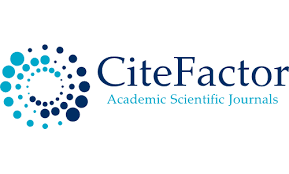Cloud Computing Services with Minimal Redundancy, Storage, and Effective Processing Capabilities
Keywords:
Data replication, RAID, Erase code, computingAbstract
To put it another way, cloud computing is a method that allows for the rapid movement of resources such as servers, storage, networks and services from one location to another utilizing little administration effort. For the most part, it is a large-scale distributed computing architecture that is based on dynamically-scalable and managed virtualized processing power, storage, applications and services. The cloud presents to users as a single point of access for all of their anticipated computing requirements. Customers may keep their data in the cloud and use the on-demand software from the cloud without having to worry about local infrastructure. When it comes to computers, security and reliability are two of the most pressing concerns. A revolutionary new platform has been developed to solve the issues of security vulnerability and data center dependability in this study. The Cloud Storage system employs data redundancy strategies including replication, RAID, and erasure code to give tools at any time (reliability). Cloud computing systems may be installed in one of three ways. Public, private, and even a mix of all three have existed. There is already a private cloud at which the cloud is developed, managed by the particular enterprise in the proposed system. Replication and RAID's drawbacks were mitigated by the inclusion of Erase Code in the private cloud system's design. Low storage costs, normalization costs, fast processing speeds, ease of data center recovery in the event of a disaster, and assistance in setting up a secure cloud storage system are just some of the benefits it provides
References
HaiyingShen, Guoxin Liu, “Swarm Intelligence based File Replication and Consistency Maintenance in Structured P2P File Sharing Systems” IEEE Transactions on Computers, Vol. 64, No. 10, Oct 2015.
. SameeUllah Khan, Ishfaq Ahmad “Comparison and analysis of ten static heuristics-based Internet data replication techniques” Parallel Distrib. Comput. 68 (2008)
. Zheng Yan, Lifang Zhang, Wenxiu Ding, and QinghuaZheng, “Heterogeneous Data Storage Management with Deduplication in Cloud Computing” IEEE Transactions on Big Data, Vol. pp, No.99, May 2017
. Jing Zhao,XuejunZhuo, “Contact Duration Aware Data Replication in DTNs with Licensed and Unlicensed Spectrum” IEEE Transactions On Mobile Computing, Vol. 15, No. 4, April 2016
. Jenn-Wei Lin, Chien-Hung Chen “QoS-Aware Data Replication for Data Intensive Applications in Cloud Computing Systems” IEEE Transactions on Cloud Computing May 2014
. Rodrigo N. Calheiros, Rajkumar Buyya “Meeting Deadlines of Scientific Workflows in Public Clouds with Tasks Replication” IEEE Transactions on Parallel and Distributed Systems, Vol. 25, No. 7, July 2014
. Han Hu, Yonggang Wen, Tat-Seng Chua, Jian Huang, Wenwu Zhu and Xuelong Li “Joint Content Replication and Request Routing for Social Video Distribution over Cloud CDN: A Community Clustering Method” IEEE Transactions on Circuits and Systems for Video Technology, Vol. 26, No. 7, July 2016.
. S.Annal Ezhil Selvi and Dr. R. Anbuselvi, “Ranking Algorithm Based on File’s Accessing Frequency for Cloud Storage System”, International Journal of Advanced Research Trends in Engineering and Technology (IJARTET) Vol. 4, Issue 9, Sep 2017.
. Jonathan L. Krein, Lutz Prechelt “Multi-Site Joint Replication of a Design Patterns Experiment using Moderator Variables to Generalize across Contexts” IEEE Transactions On Software Engineering, Vol. X, No. X, Month 2015
. Wenhao Li, Yun Yang, Dong Yuan, “Ensuring Cloud Data Reliability with Minimum Replication by Proactive Replica Checking”, IEEE Trans. Computers 65(5): 1494-1506 (2016)
. YaserMansouri, Adel NadjaranToosi, and Rajkumar Buyya “Cost Optimization for Dynamic Replication and Migration of Data in Cloud Data Centers” IEEE Transactions On Cloud Computing, Vol. pp, No. 99, January 2017
. Runhui Li, Yuchong Hu, and Patrick P. C. Lee “Enabling Efficient and Reliable Transition from Replication to Erasure Coding for Clustered File Systems” IEEE Transactions On Parallel And Distributed Systems, Vol. pp, No. 99, March 2017.
. Jerry Chou, Ting-Hsuan Lai “Exploiting Replication for Energy-Aware Scheduling in Disk Storage Systems” IEEE Transaction on Parallel and Distributed Systems, Volume 26, No 10, Oct 2015.
. Guoxin Liu, HaiyingShen, Harrison Chandler “Selective Data replication for Online Social Networks with Distributed Datacenters” IEEE Transactions on Parallel and Distributed Systems, Vol. 24, No. 8, August 2016
. Amina Mseddi, Mohammad Ali Salahuddin “On Optimizing Replica Migration in Distributed Cloud Storage Systems” 4th IEEE International Conference on Cloud Networking (IEEE CloudNet 2015)
. Kan Yang &XiaohuaJia 2012, ‘Data storage auditing service in c loud computing: challenges, methods and opportunities’, Springer, World Wide Web, vol. 15, pp. 409-428.
. Kan Yang & XiaohuaJia 2013, ‘A n Efficient and Se cure Dynamic Audi ting Protocol for Data Storage in Cloud Computing’, IEEE Transactions o n Parallel and Distributed Systems, vol. 24, n o. 9, pp. 1717-1726.
. Rashmi, KV, Nihar B Shah, Kannan Ramchandran & Vijay Kumar, P 2018, ‘Information-Theoretically Secure Erasure Codes for Distributed Storage’, IEEE Transactions on Information Theory, vol. 64, no. 3, pp. 1621-1646.
Downloads
Published
Issue
Section
License

This work is licensed under a Creative Commons Attribution-NonCommercial 4.0 International License.
User Rights
Under the Creative Commons Attribution-NonCommercial 4.0 International (CC-BY-NC), the author (s) and users are free to share (copy, distribute and transmit the contribution).
Rights of Authors
Authors retain the following rights:
1. Copyright and other proprietary rights relating to the article, such as patent rights,
2. the right to use the substance of the article in future works, including lectures and books,
3. the right to reproduce the article for own purposes, provided the copies are not offered for sale,
4. the right to self-archive the article.












